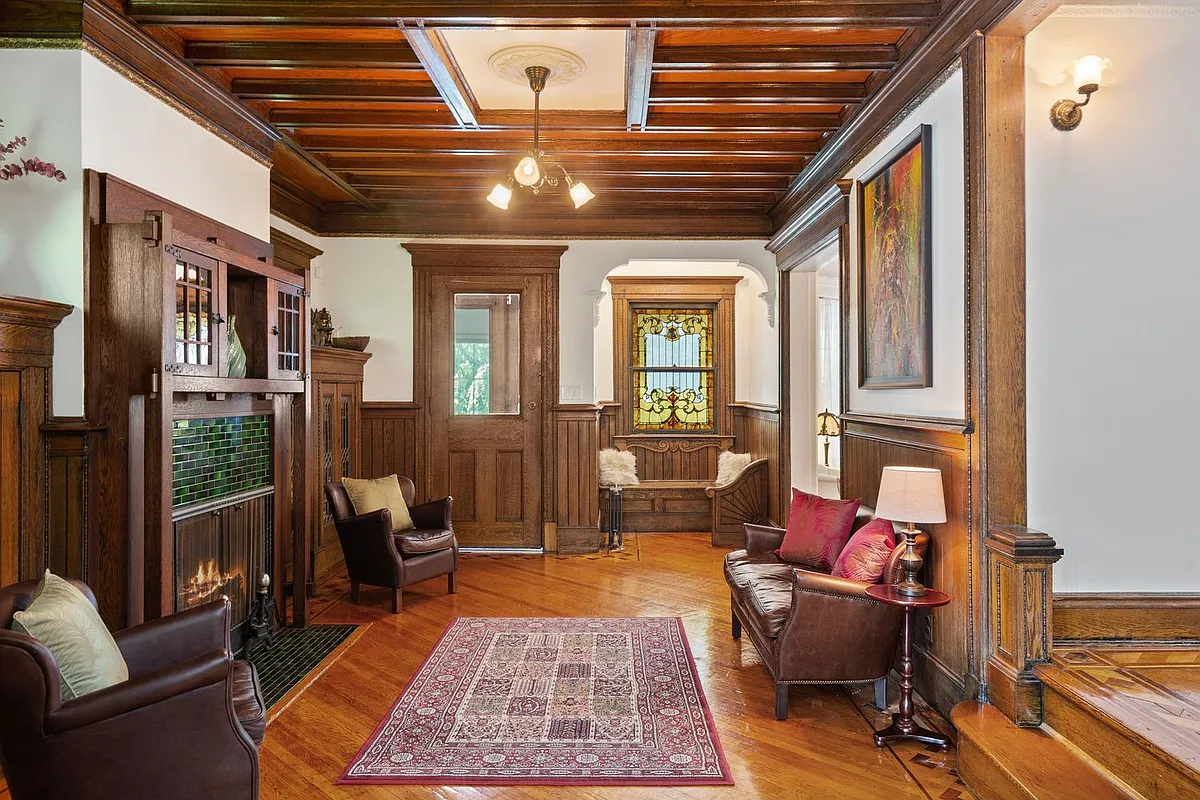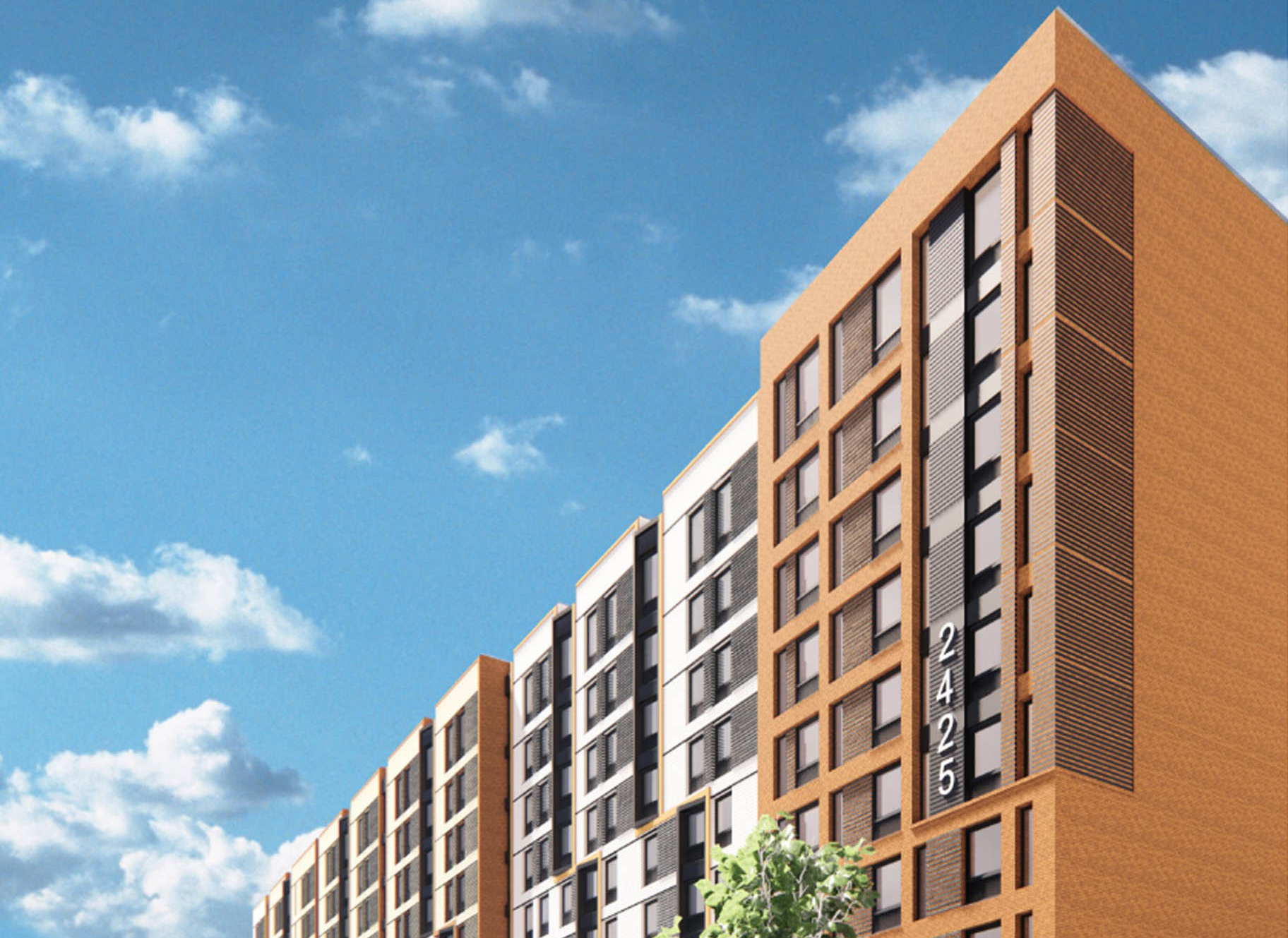Lots of Love for the Schermerhorn House
The Schermerhorn is not your average affordable housing project, as The Times makes abundantly clear in its profile this weekend. (As we put it a couple of weeks ago, “This place is about as sexy as supportive housing gets.”) Stand-out amenities include a gym with floor-to-ceiling windows and a ground-floor performance space. (The Brooklyn Ballet…


The Schermerhorn is not your average affordable housing project, as The Times makes abundantly clear in its profile this weekend. (As we put it a couple of weeks ago, “This place is about as sexy as supportive housing gets.”) Stand-out amenities include a gym with floor-to-ceiling windows and a ground-floor performance space. (The Brooklyn Ballet will be the anchor tenant.) Designed by Polshek Partnership Architects, the 217-unit building will end up being split fairly evenly between arts-related professionals who don’t make a lot of dough and those who qualify for supportive housing, typically the formerly homeless and others in need of help. The interior photo in The Times story is pretty darn slick for this type of thing, seeming to confirm our suspicions that lack of creativity and resourcefulness is usually more to blame than small budgets when ugly new buildings are put up.
New Homes for a Varied Cast [NY Times]
Schermerhorn House 1/3-Rented [Brownstoner]
Development Watch: Schermerhorn House Nears Completion [Brownstoner]
Development Watch: Schermerhorn House Gets Its Skin [Brownstoner] GMAP
Development Watch: 160 Schermerhorn Tops Out [Brownstoner] P*Shark
Development Watch: Schermerhorn House Rising [Brownstoner] DOB
Some More 411 on the “Schermerhorn House” [Brownstoner]





MTA workers and teachers are in unions. They make decent base salaries and have great benefits.
The arts and humanities are given short shrift in the schools. they don’t get subsidies or salaries like A-rod or Derek Jeter. Yet the arts are not only good for our souls, but- for those of you worried about money- they generate millions of dollars, and a nice chunk of it goes into the NYC coffers. Its about the economy. So when we don’t have lighting techicians, costumers, new artists, conservators etc. necessary to the arts, who will we blame? If this country- or even this city put 1/100th of the money the Ratners,or the sports teams get, into arts organizations they could pay people real wages.
Are the arts less important than nannies? How much do nannies contribute to society in general compared to the arts?
But Z
how much of the arts is subsidize?
When budget crisis happens, what is usually cut first both in terms of service and education? Arts.
Job training resources means non artistic skill sets like word processing, spreadsheet, etc.
Why do they have non profit organizations for specific diseases?
Why have an organization for specific trades?
BTW – isn’t this a private endeavor. Other than the tax breaks, which ALL non profit gets anyway, what the hell is anyone’s problem?
I will concur, it was a joke. After all, some of them probably went to Hampshire, Bard, Reed, Vassar…
In the first few heady years of my existence in this fair city, I did have the opportunity to meet a few established artists, and I don’t remember any of them being in subsidized housing except for one Westbeth legacy.
From the article it appears as if it is non-profits rather than NYC directly that is subsidizing this. If that is indeed the case and there is not a large amount of tax $$ involved then I am cool with it.
I don’t believe in things such as this being heavily government subsidized. This is mainly because it is dangerous to have the government involved in approving certain arts and artists and by implication disapproving or rejecting others.
Privately run non-profits are free to do what they wish with their funds, on the other hand, and I don’t think ‘fairness’ comes into it if it is privately financed for the most part.
I fully agree with Heather and Rob. Heather’s last statement hit the nail right on the head.
quote:
Why do people automatically assume that the building is full of Sarah Lawrence grads, or some other form of suburban dilletantes?
im not assuming that at all. it was just a JOKE that heather made. i assume it will be people in the arts making 20-30k per year. i dont think they should be subsidized and i stand by it. i dont care if they grew up in abject poverty or came from beverly hills.
*rob*
You know who else doesn’t make a lot of money? Your nanny and the person who cleans for you. MTA workers. Teachers. Secretaries. Grad Students. And so on. I am not against subsidies, I am against subsidizing housing for artists. The slots should be open to all comers — which would produce an actual diverse population, instead of a faux-diverse one.
Rob, what article or fact are you basing this rant on? These are very small studio apartments in a crowded building. Look at the photo, and the description. There is no room in these studios for more than the basics necessary, and most everything is packed into storage compartments and built-ins. This is NOT luxury living. You can smell cooking in the hallways, and you can probably hear a fly on your neighbor’s walls. I’m sure the gym, which I have never heard you ever mention being a priority in life before, has a few machines and room for floor exercise. It’s not the New York Athletic Club. The building will hold a couple hundred people. Hardly living it up for the majority of people in the arts in this city, who number in the thousands, and mostly do live with roommates, or in less desireable parts and apartments in the city.
This jealousy over someone’s good fortune is really unbecoming and tiresome. You make enough to share an apt in one of the most desireable neighborhoods in the city. If you aren’t happy, you have options. Just be glad someone less fortunate is able to catch a break, move on, and make your own breaks. ‘Nuff said.
rob is right that there isn’t a compelling reason to offer cheap housing to low-income people in the arts vs. low-income people in other professions. there are plenty of lines of work that are important to the city and you could make an argument for subsidizing all of them.
on the other hand, mm is right that there isn’t a compelling reason to object to a developer’s desire to direct half of the housing in a modest development to low-income artists. if that’s what they want to do with the building, and that standard doesn’t indirectly discriminate in any impermissible fashion (race, gender, etc.), then what’s the big deal?